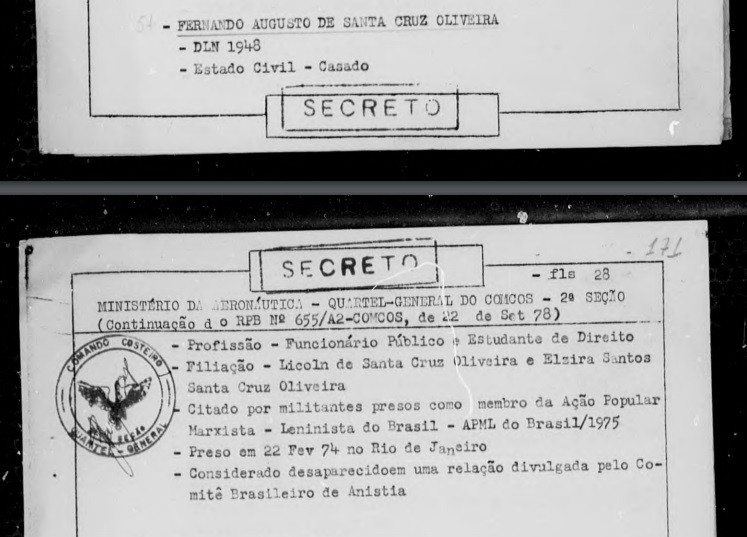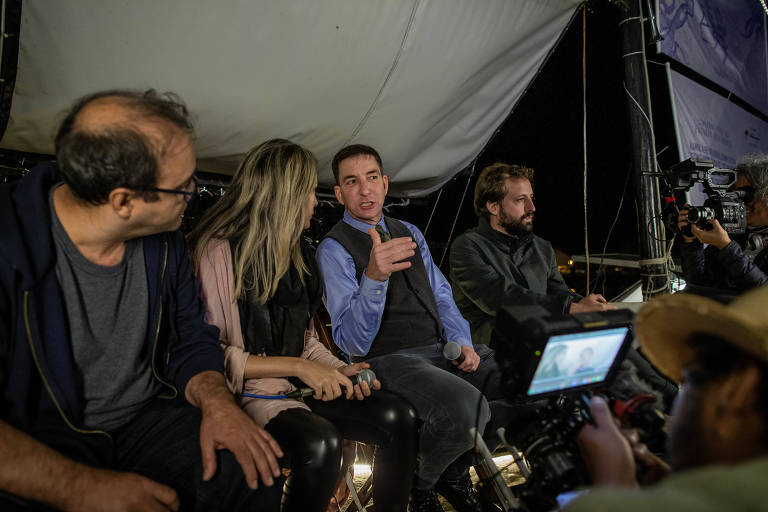By
Terrence McCoy
washingtonpost.com
Glenn Greenwald was jittery. He had
another big story in the works, and the atmosphere around his home
office was frenetic: Dogs barking, 27 security cameras filming, big men
with guns standing guard.
For
weeks, from a house transformed into a bunker, Greenwald had published
allegations casting doubt on the impartiality of the corruption
investigation that led to the imprisonment of former Brazilian president
Luiz Inácio Lula da Silva and contributed to the rise of President Jair
Bolsonaro.
In two days, he would publish another story
alleging that the judge who’d overseen Lula’s case, Sérgio Moro, a
national hero in Brazil for his role taking on corruption, had colluded
with prosecutors to convict him.
“This material is going to come out,” he said. “Even if they put me in prison.”
The
prospect felt real enough. Greenwald, the polarizing American
journalist who came to prominence reporting on the U.S. government
surveillance programs exposed by Edward Snowden, had promised months of
stories — a steady drip of leaks that could imperil the Bolsonaro
agenda. Some members of Brazil's National Congress had called for his deportation. Others accused him of committing a crime. Death threats were rolling in.
Most recently, the federal police, commanded by Moro, now Bolsonaro’s justice minister, reportedly began investigating Greenwald’s finances in a probe that press advocates here see as an attempt to silence him.
The
public threats against Greenwald represent an early test for Brazil
under Bolsonaro, the right-wing former military officer who won the
presidency last year with appeals to nationalism, homophobia and
nostalgia for the country’s two-decade military dictatorship.
Will
this government tolerate damaging reporting by a gay foreign
journalist? Or will it move to silence him, confirming fears of
Bolsonaro’s potential for authoritarianism?
“There
are all of these lurking questions that have found a vehicle for
expression in this story,” Greenwald said. “It’s more than just Sérgio
Moro. It’s about what kind of government we’re going to have.”
Greenwald
moved to Rio in 2005, after meeting the man who would become his
husband while vacationing here. Over the next decade, as he covered
American issues from afar, he built a Brazilian life. His husband, David
Miranda, is a socialist member of Congress. They adopted two Brazilian
children and opened a dog shelter. They now live in a cavernous house,
built around a giant boulder, on a leafy street in a gated community
near a mountain.
His divisive
reporting and opinions have long attracted fans in the United States —
and also critics, some of whom he has viciously attacked online: “You
idiot” is a favorite epithet on Twitter.
It
wasn’t until 2016, however, that he became a polarizing figure here,
too. The impeachment of President Dilma Rousseff, Lula’s anointed
successor, was cleaving the country along partisan lines. Greenwald
started writing Portuguese-language columns critical of the proceedings.
They found a massive audience, convincing him there was room here for
an investigative news site.
The
Intercept Brasil, launched in August 2016 as a Portuguese-language
offshoot of the online news organization Greenwald co-founded two years
earlier, joined a media industry that would soon be strained by a
divisive political campaign, the imprisoning of Lula and the ascent of
Bolsonaro. The right-wing candidate made attacks on the mainstream media
a pillar of his campaign.
“Bolsonaro
uses Trump as a role model,” said Rosental Calmon Alves, director of
the Knight Center for Journalism in the Americas at the University of
Texas at Austin. “Part of Trumpism is attacking the press and having the
press as the enemy. Bolsonaro has tried to play by the same playbook.”
Bolsonaro supporters harassed and threatened fact-checkers, advocates for the press say. The Brazilian Association of Investigative Journalism counted nearly 62 instances of physical aggression against journalists in 2018 in a political context.
“The
fact that we had to create a systematic survey of instances — a need
that had not been perceived until then — shows that the last campaign
was atypical,” said the organization’s executive manager, Marina Iemini
Atoji.
When Bolsonaro won the election, Paris-based Reporters Without Borders called him “a serious threat to press freedom and democracy in Brazil.”
It
was in this context, Greenwald says, that a person — he declined to say
who — got in touch to offer information that would send tremors through
the political order.
A central
figure in the archive of materials he obtained was Moro, one of
Brazil’s most popular people, seen by many as a crusader for public
probity.
The Intercept’s first
story, published in early June, challenged that narrative. It alleged
that Moro had worked inappropriately with federal prosecutors to
imprison Lula, the leader in presidential polls, clearing Bolsonaro’s
path to the presidency. Moro has denied wrongdoing.
The
reporting triggered responses that reflected the country’s divisions.
While a majority disapproved of his alleged communications with
prosecutors during the “Car Wash” investigation, polling has shown,
most have continued to support him. And Greenwald, who has never hidden
his disdain for Bolsonaro, found himself facing an accusation he’s heard before: that he’s less a journalist than an activist.
“He’s
very clearly positioned in Brazil,” said Oliver Stuenkel, an assistant
professor of international relations at the Getúlio Vargas Foundation in
Sao Paulo. “A lot of people say he has an agenda and he’s not
objective.”
Soon the story
became as much about Greenwald — his sexuality, his marriage to a
Brazilian man, his status as a foreigner — as about the allegations the
Intercept was publishing.
Carlos Bolsonaro, the president’s son, fanned conspiracy theories and appeared to call Greenwald’s
husband a girl. An online petition for the journalist’s deportation
amassed nearly 100,000 signatures. Homophobic messages tore across
social media. Moro said the Intercept was “allied” with “criminal hackers.”
Then
this month, the website Antagonist, which has a reputation in Brazil as
anti-Lula, reported that the federal police were investigating
Greenwald’s finances. Officials have declined to confirm or deny an
investigation.
“Our
constitution is very hard in the defense of freedom of expression and
the press,” said Leandro Demori, executive editor of the Intercept
Brasil. “But are our institutions strong enough to protect the
constitution? I don’t think so. I really don’t. We’re afraid.”
Greenwald
is inclined to agree. He experienced threats and denunciations in the
aftermath of the Snowden revelations. But this feels different, he said.
It’s more personal.
“In
Snowden, I was only the reporter,” Greenwald said. “In this case,
there’s no identifiable source, so they’ve personally identified me,
like I was the person who took the material.
“I’m a good target. I’m a foreigner. I’m gay. I’m married to a socialist politician.”
He
looked outside for a moment, where it was all sun and foliage. He says
Brazil is still “paradise.” But beyond the trees were concrete walls,
now freshly fortified with coils of electrified barbed wire. These days
he rarely ventures beyond its barrier, he said, for fear of
assassination.
Still, he has no plans of leaving.
“I don’t look at this as a foreign place,” he said. “It’s my home.”



/https%3A%2F%2Fwww.ft.com%2F__origami%2Fservice%2Fimage%2Fv2%2Fimages%2Fraw%2Fhttp%253A%252F%252Fcom.ft.imagepublish.upp-prod-us.s3.amazonaws.com%252F1cfa904c-a95e-11e9-90e9-fc4b9d9528b4%3Ffit%3Dscale-down%26source%3Dnext%26width%3D700)




/https%3A%2F%2Fogimg.infoglobo.com.br%2Fcultura%2F23822013-529-d76%2FFT450A%2Fxpuerto-rico-strong.jpeg.jpg.pagespeed.ic.oXYkRB-Nlh.jpg)
/https%3A%2F%2Fogimg.infoglobo.com.br%2Fcultura%2F23822021-8e0-edd%2FFT450A%2Fxpuerto-rico-strong-adriana-melo.jpeg.jpg.pagespeed.ic.KSymJxkLph.jpg)

/https%3A%2F%2Fstatic01.nyt.com%2Fimages%2F2019%2F06%2F19%2Farts%2F18edgeofdemocracy%2Fmerlin_156596004_7bbb5d09-bb45-4c9c-b4b8-fbdc7630f8c6-articleLarge.jpg%3Fquality%3D75%26auto%3Dwebp%26disable%3Dupscale)
